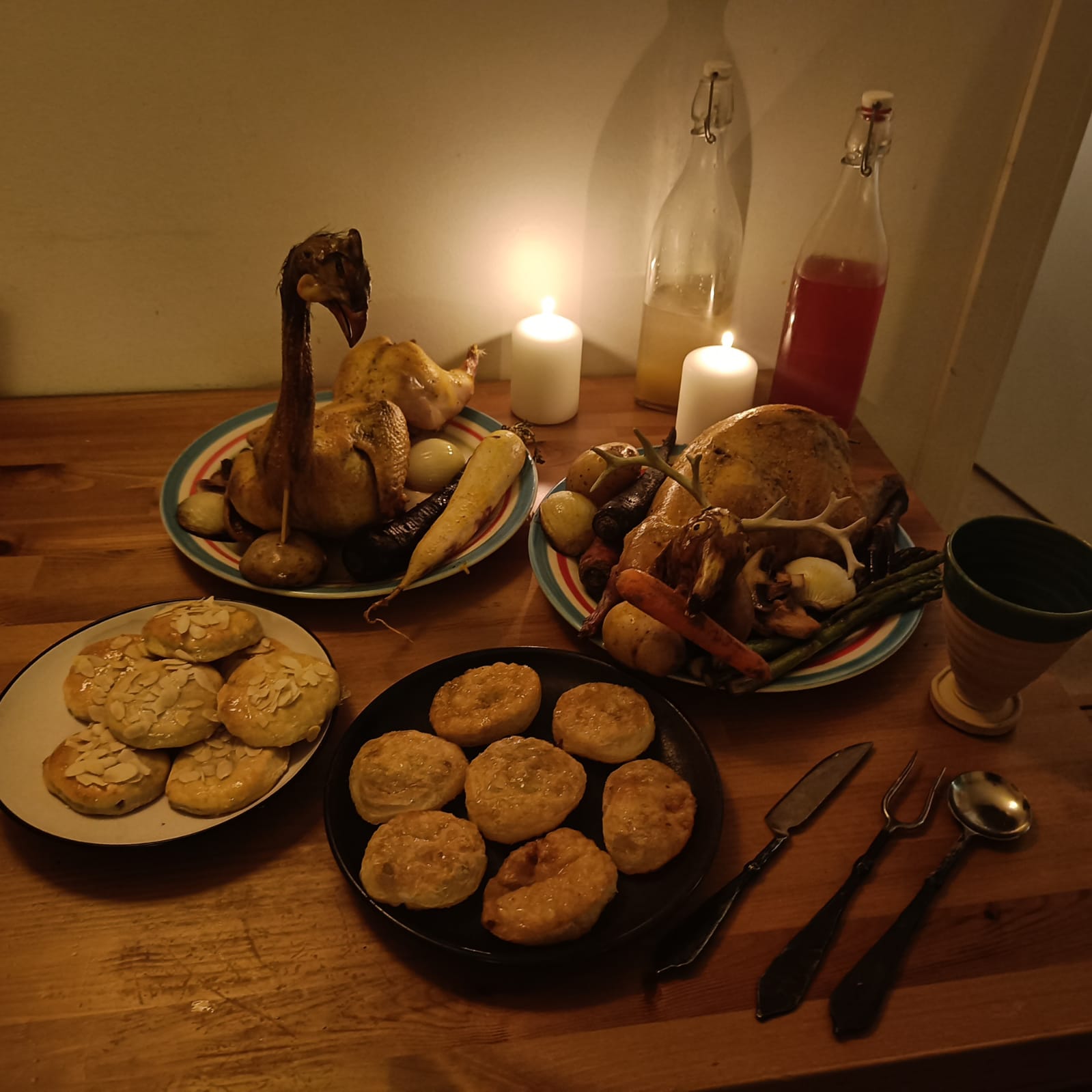

Food has always been tied to status and wealth, but the way in which decadence has been expressed has changed drastically over the ages, mostly due to changing (un)availabilities in products.
For example, honey was a prized product for many centuries until refined sugar came to Europe from the early Islamic world, and due to its rarity became a priceless 'spice' and symbol of wealth. Honey was then suddenly seen as a food for commoners. You can see this shift in old recipes, especially near the end of the middle ages and into the 16th century. In Tudor England it was even popular for a while to have black teeth to flaunt your access to sugar. Much later the trend changed again from the now widely available sugar to artificial sweeteners in the late 1970s, then to 'natural sugars' a few decades later, and all the way back to honey in current times. This chase of 'rarity' and 'exclusivity' was the driver for most changes in diets and to a degree still is today.
Now back to the medieval times.. At this time spices were the star of the show and used in ways that seem strange to European pallets today. Cloves, cinnamon, nutmeg, saffron, and mace would be mixed with both sweet and savory foods, resulting in things that taste vaguely 'Christmassy'. The problem however, was that you could not really see spices that well, thus it was hard to brag. This dilemma was often solved by the richest people in the form of food spectacle and grandeur (ironically called subtleties). Rare animals would be coated in gold, others mounted in human poses. Some birds were even prepared and then 'refeathered' to look more lifelike, and so on. However, at some point, someone decided that a rare animal was not enough and that mythical beasts needed to appear on the menu. Thus the cockentrice was born, a Frankensteinian creation made out of two (or more!) animals that were sewn together.
Today only three recipes for the cockentrice remain, all using a pig and capon as 'donors'. The name is thought to be a 'punny' combination of 'Cock' (capon) and 'Gryse' (pig) which of course also refers to the mythical creature. Though probably not under this name, other animal pairings were made, likely using the same methods.
The recipes that I used as a reference are found in the Harleian Manuscript no. 279 and the Douce Manuscript no. 55, both available and translated into modern English on Godecookery.com with added instructions by Max Miller of Tasting History. However, my biggest deviation is in the animal pairings, as I could not get my hands on a whole pig and capon and thus made do with a hare and a Guinea foul, purely because I could buy both with the head still attached and because the sizes matched. (You can imagine that the emails between me and multiple butcher shops were weird.)
For Cockentrice:
Once I had the animals they had to be cut in half and cleaned internally, as both still had most of their organs. (Ask the butcher if they can cut it in half for you, as this saves a lot of work.) Once that was done I used a curved leatherworking needle and some waxed twine to sow the two halves together. (It is best to start at the spine to make sure that it is aligned with both halves.) Since you are working with two whole animals, you will get two cockentri. If you just want one, then save the rest of the meat for something else.
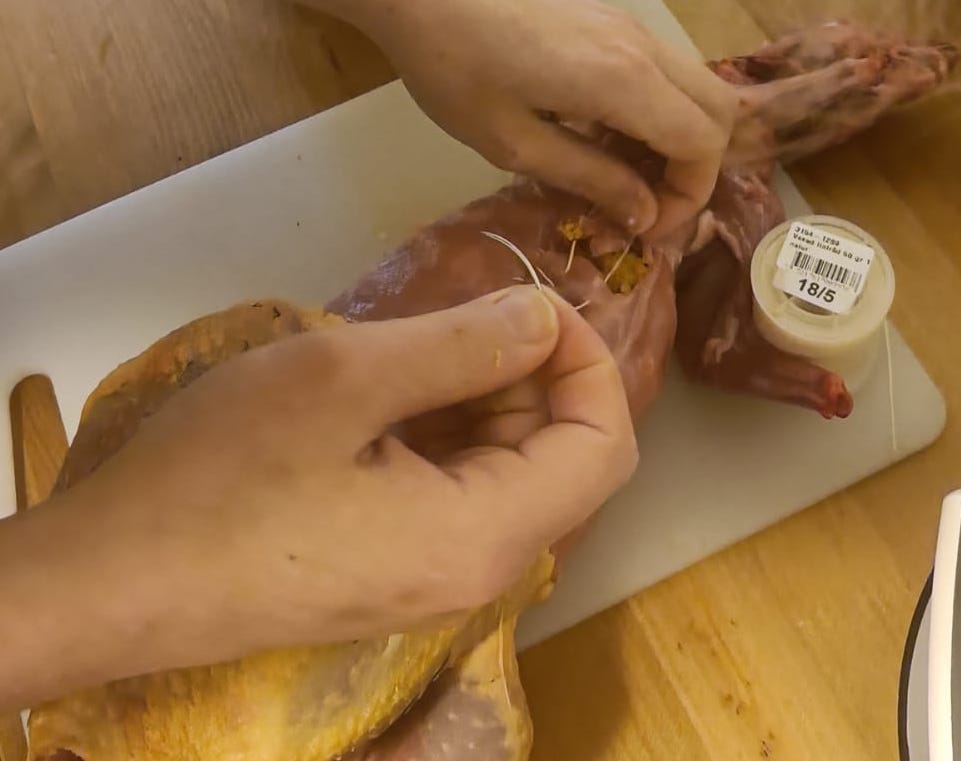
After that was done a filling was made by tearing the bread into small crumbs and mixing it well with the rest of the ingredients. This was then put into the animals and their bellies were sewn shut. This step really made them come alive in a way, as they go a lot bulkier, so don't skimp on the filling.
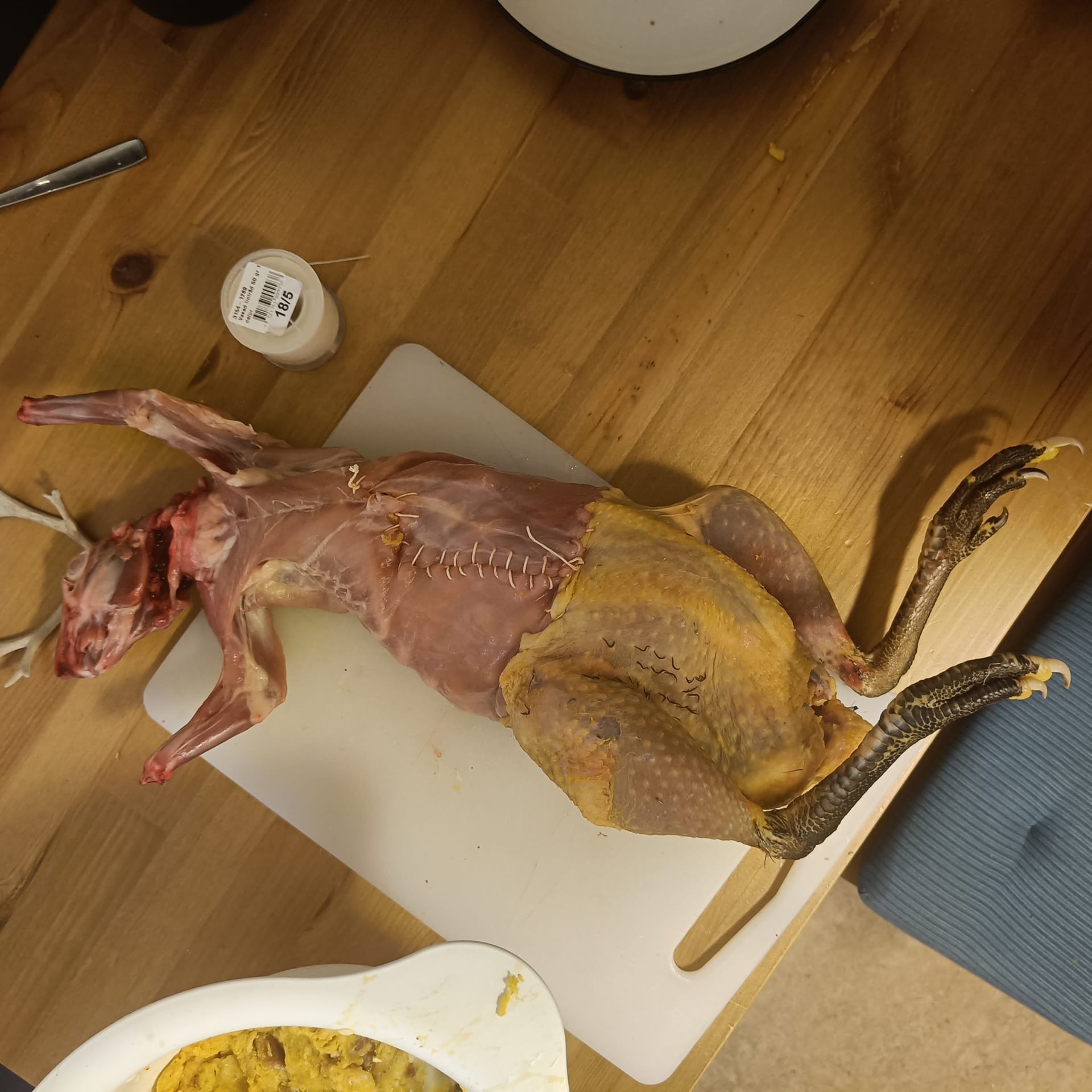
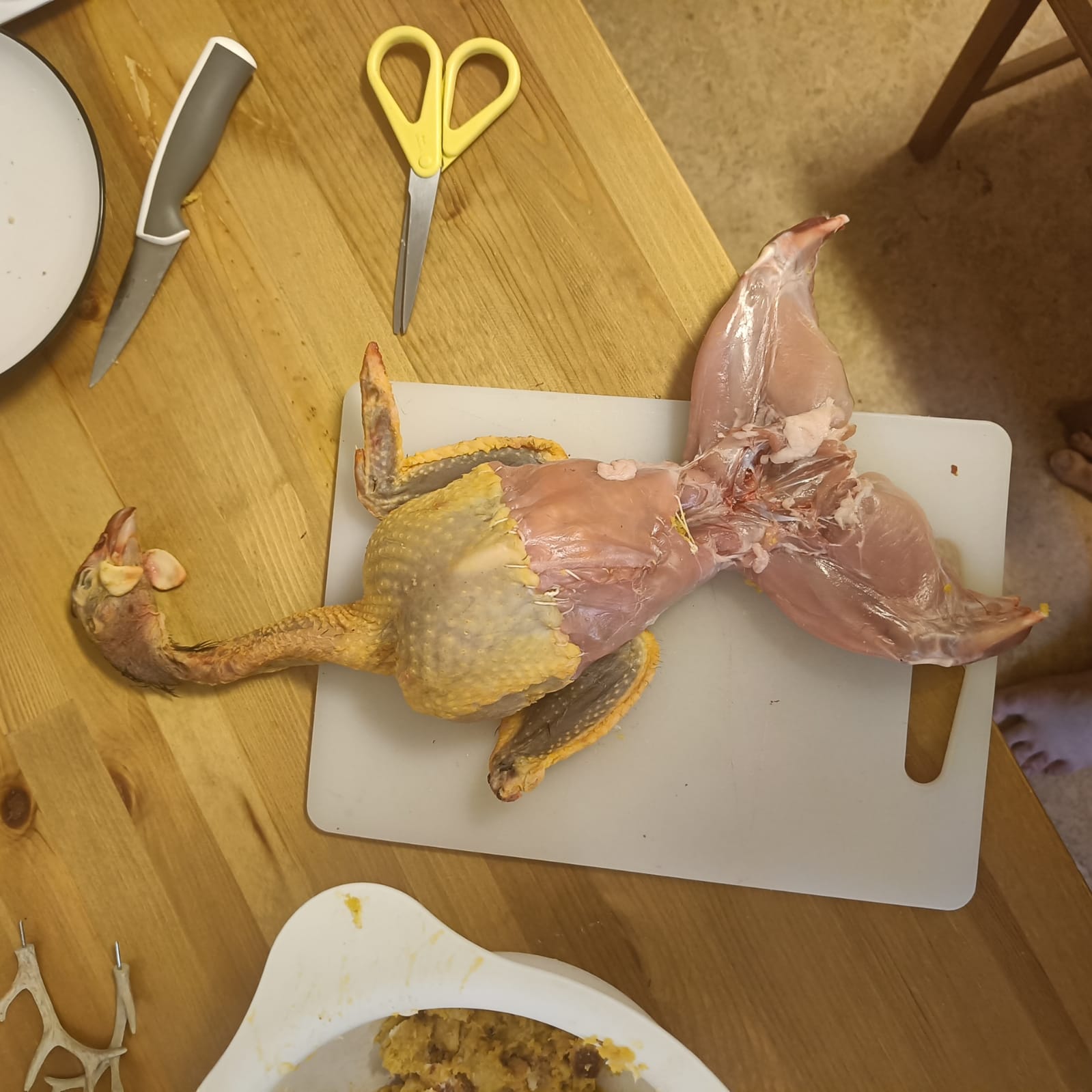
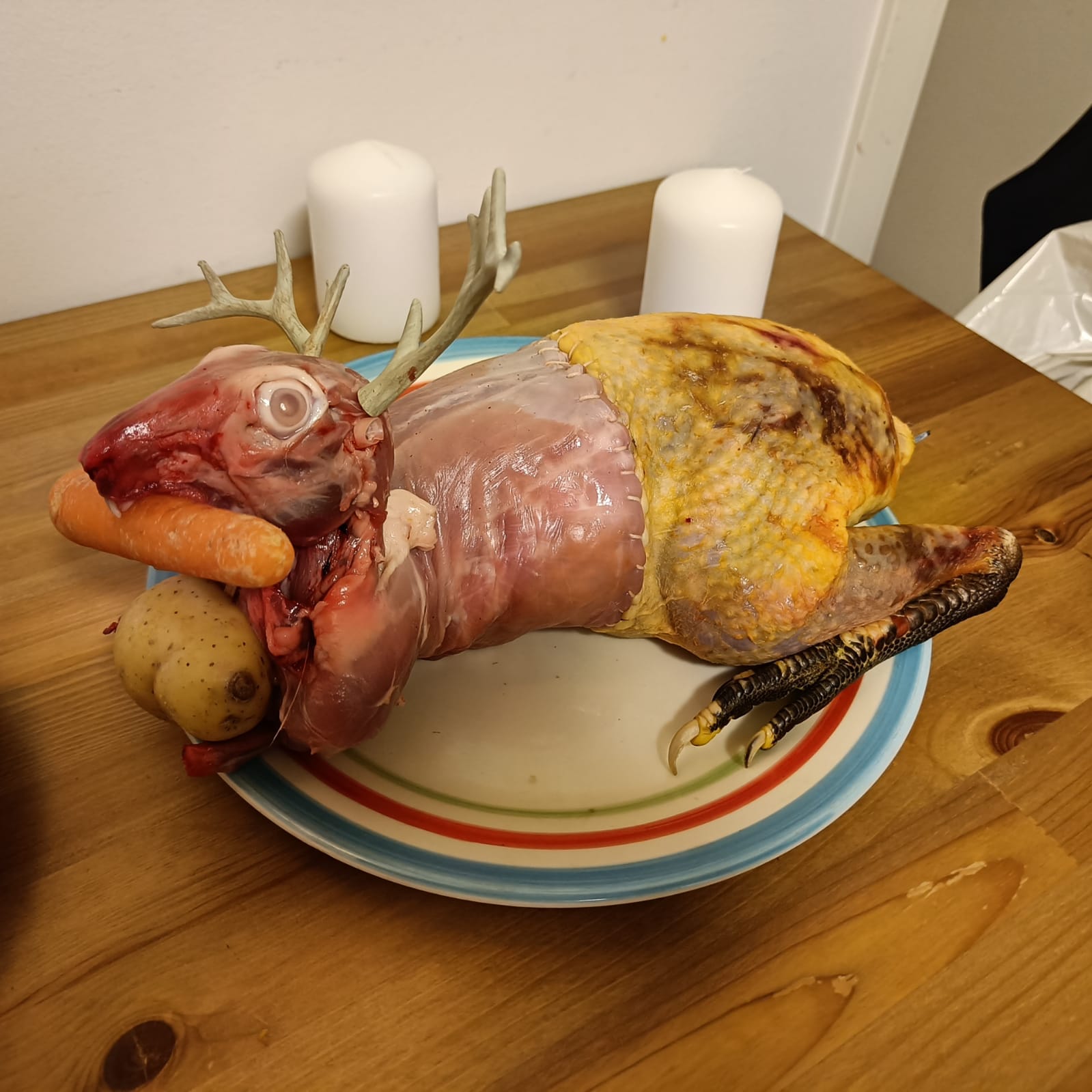
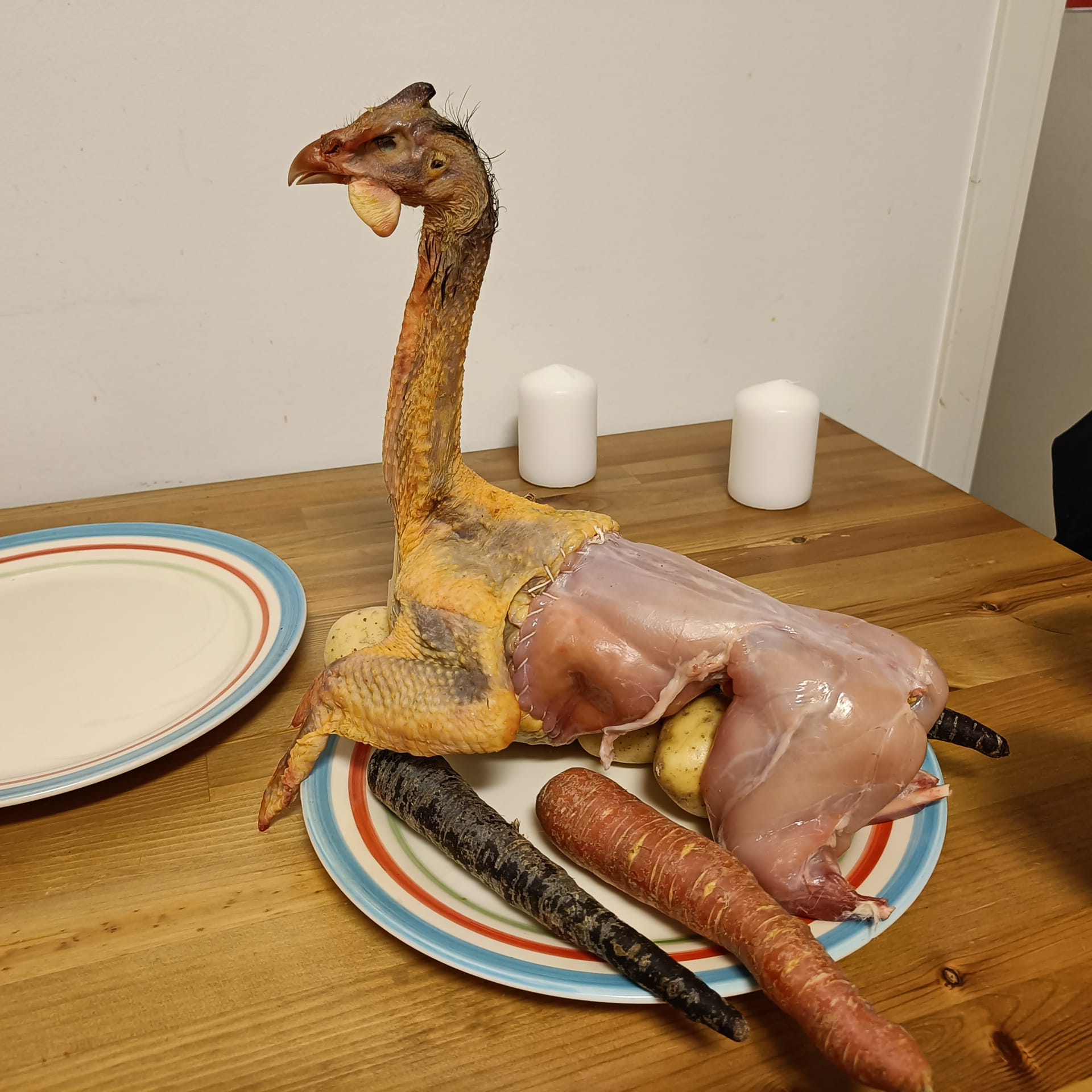
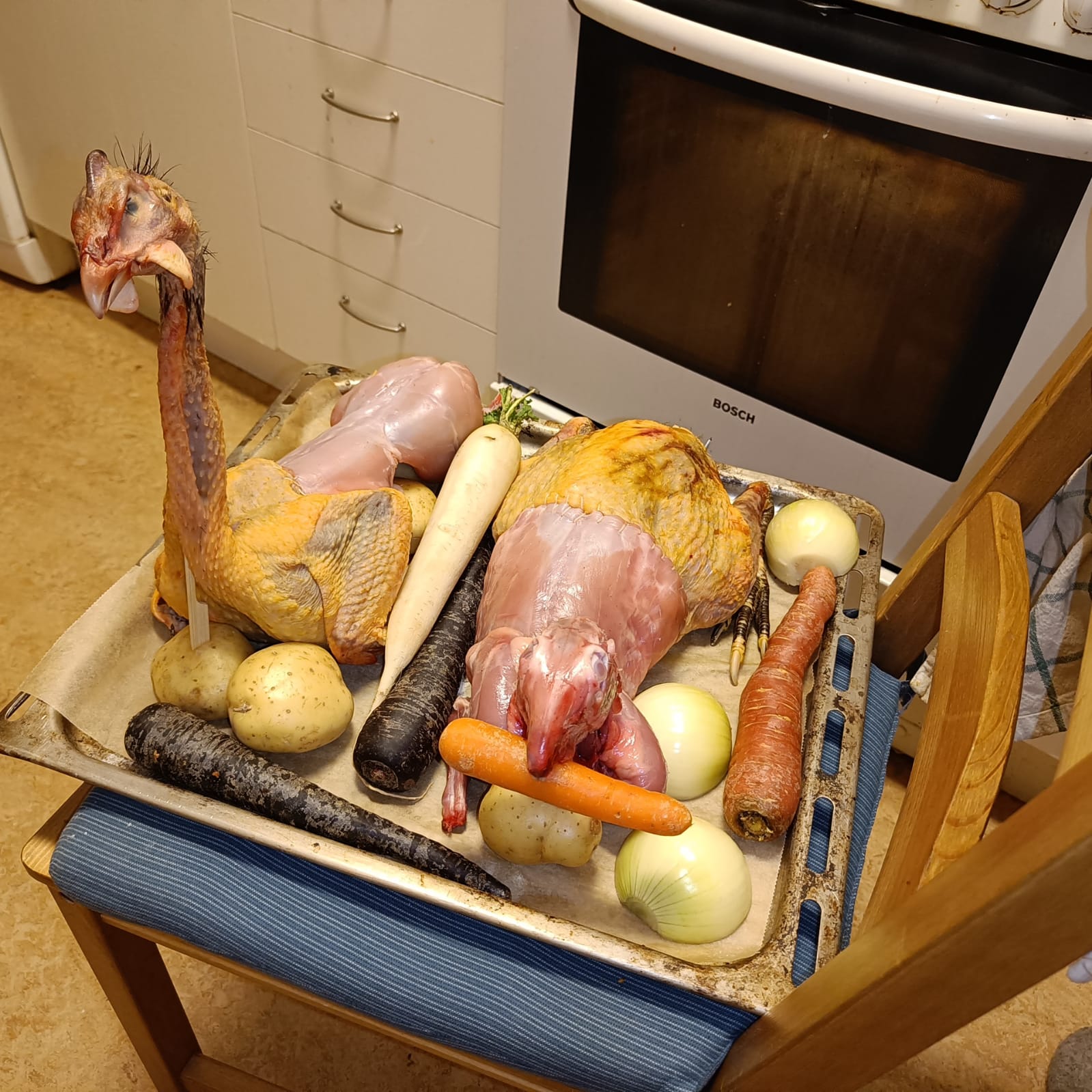
The next step is to place it in the oven at 180 degrees Celsius
for about 2 to 2.5 hours if you have both animals in the oven, probably shorter
if you only make just one.
Note1: What none of the
recipes and articles online seem to say about this dish is that the meat will
contract and stiffen inside the oven. This means that the pose in which you
place your cockentrice has to be the pose in which it is served! Moving its
limbs or head afterward is impossible without tearing the meat, so use some root
vegetables and skewers to make it look how you want it to look. Also place
something into the mouth of hare, as they tend to open up and look like they
are screaming. (Hence the apple in the mouth of most roast pigs.)
Note2: The heads of the
animals, especially the birds head, burn very quickly relative to the rest of
the animals. So make sure to tent them in foil unless you want to eat some apocalyptic
monster. (I was a bit late with this discovery myself.)
Once the meat is done, it is time to turn the heat up to 250 degrees for 10-20 minutes to let the skin crisp up a bit. After that take the cockentri out and baste them with the coating to 'gild' them. One layer is enough, and it will make the meat look much more appetizing. It will also help blend together the two animal halves. (Don't add too much or it will turn yellow and look weird.)
I bought some tiny antlers for the hare-faced cockentrice to make it into a jackalope. You may ask why, to which I will answer why not? I also used a marker to give it pupils, since its eyes became completely white in the oven and looked a bit unsettling.
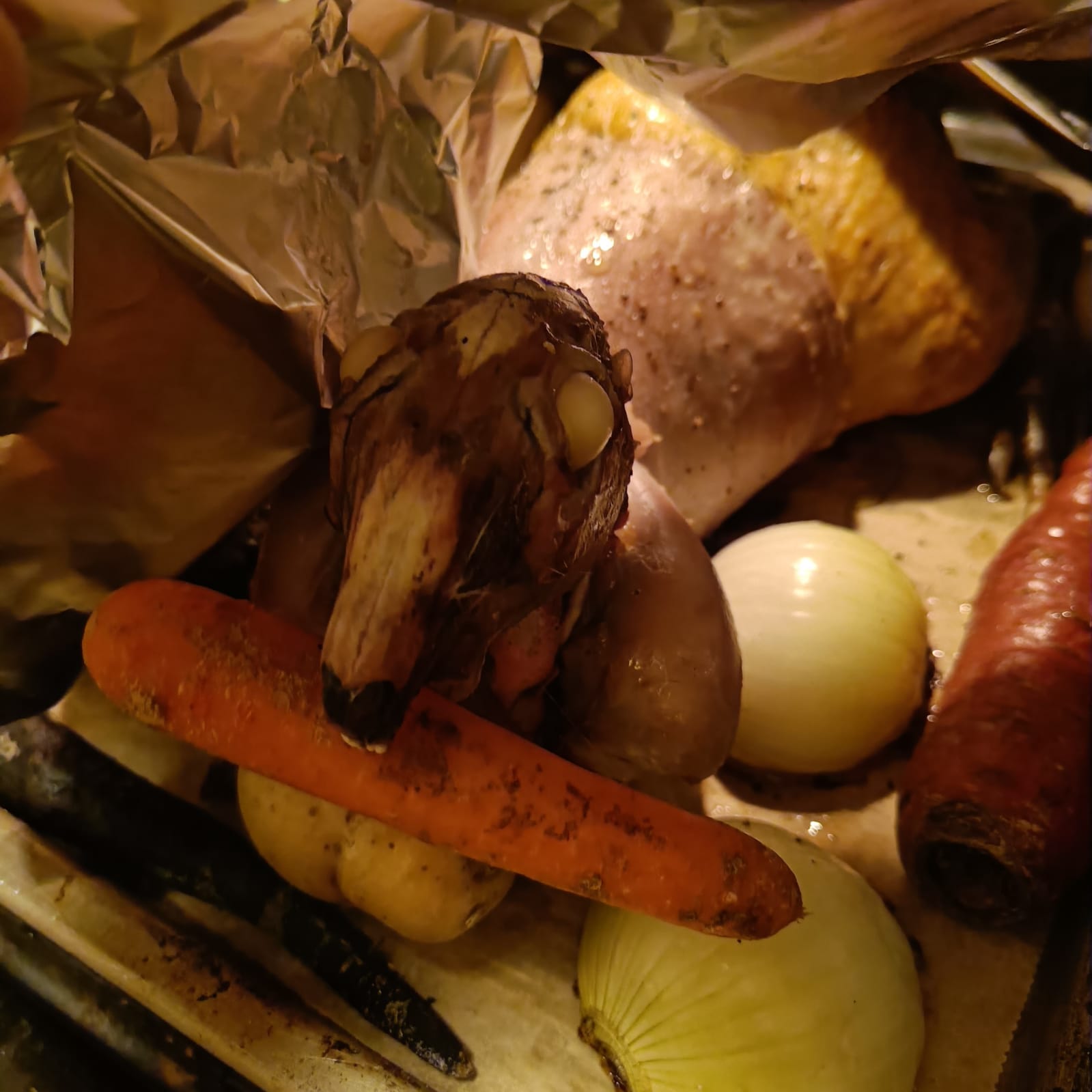
The feast was served with a bunch of different root vegetables, asparagus, mushrooms, and some period-related deserts. The meat was as expected, just roasted meat with some extra flavor. I would suggest making some sort of sauce or gravy to go with it. The filling was good and very filling because of the fat.
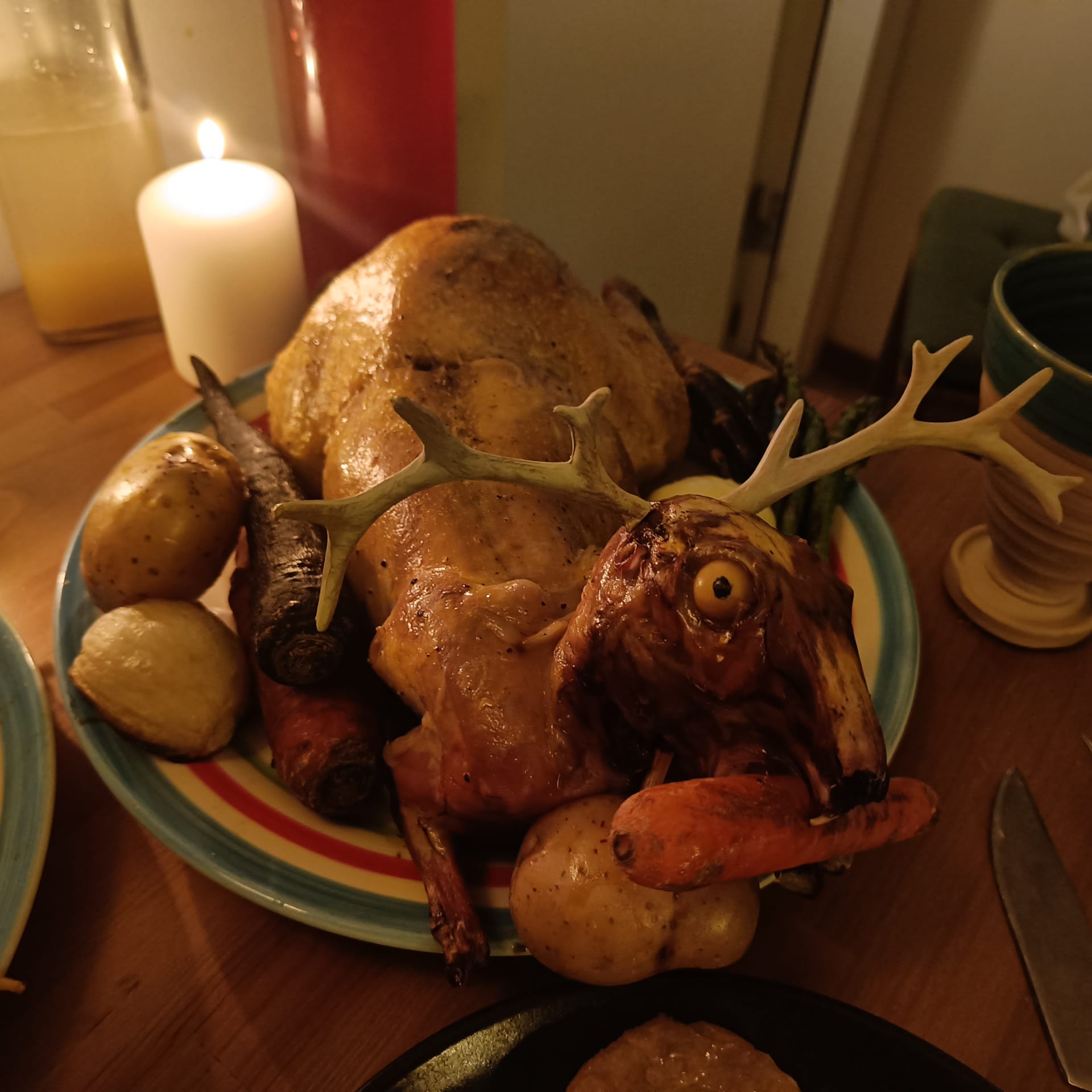
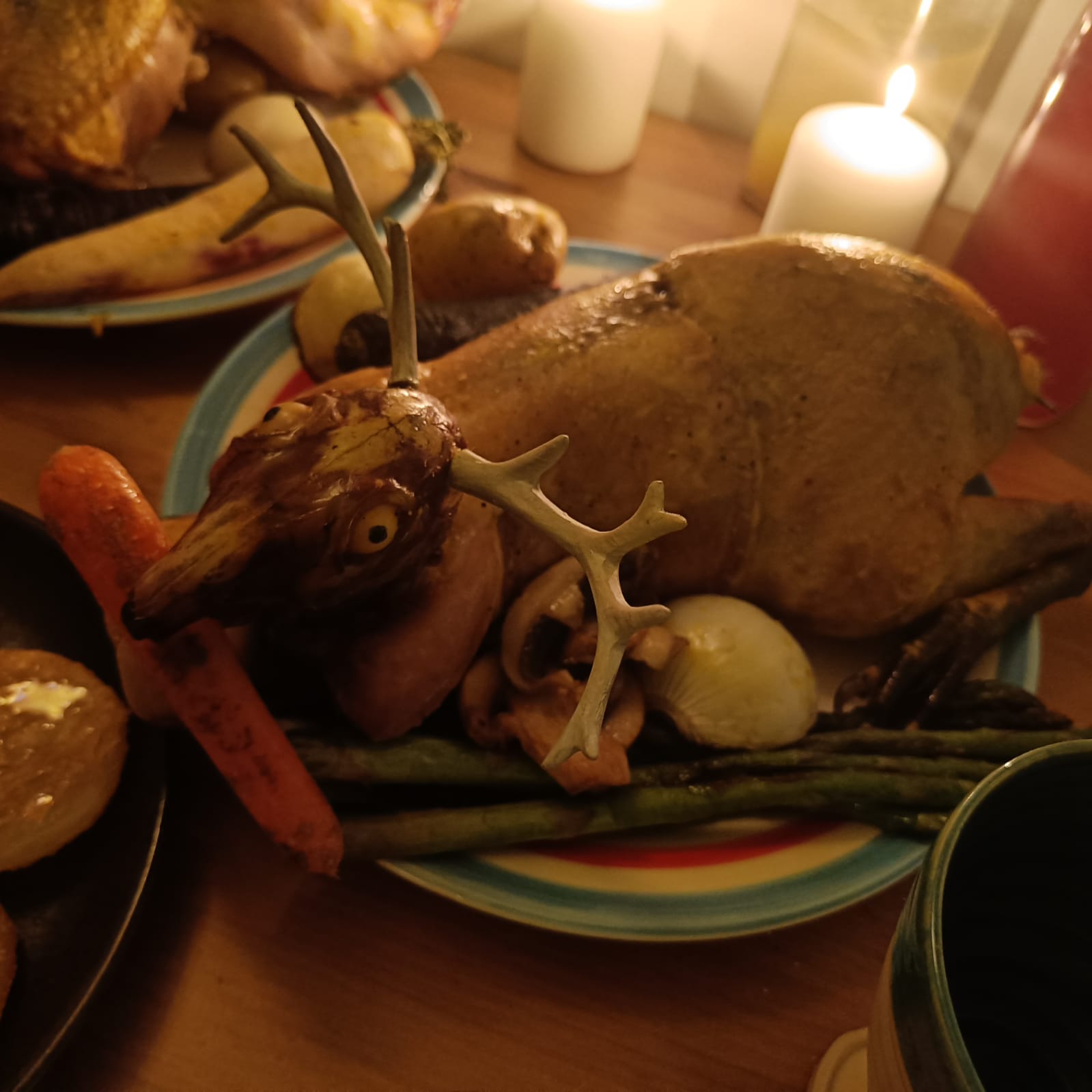
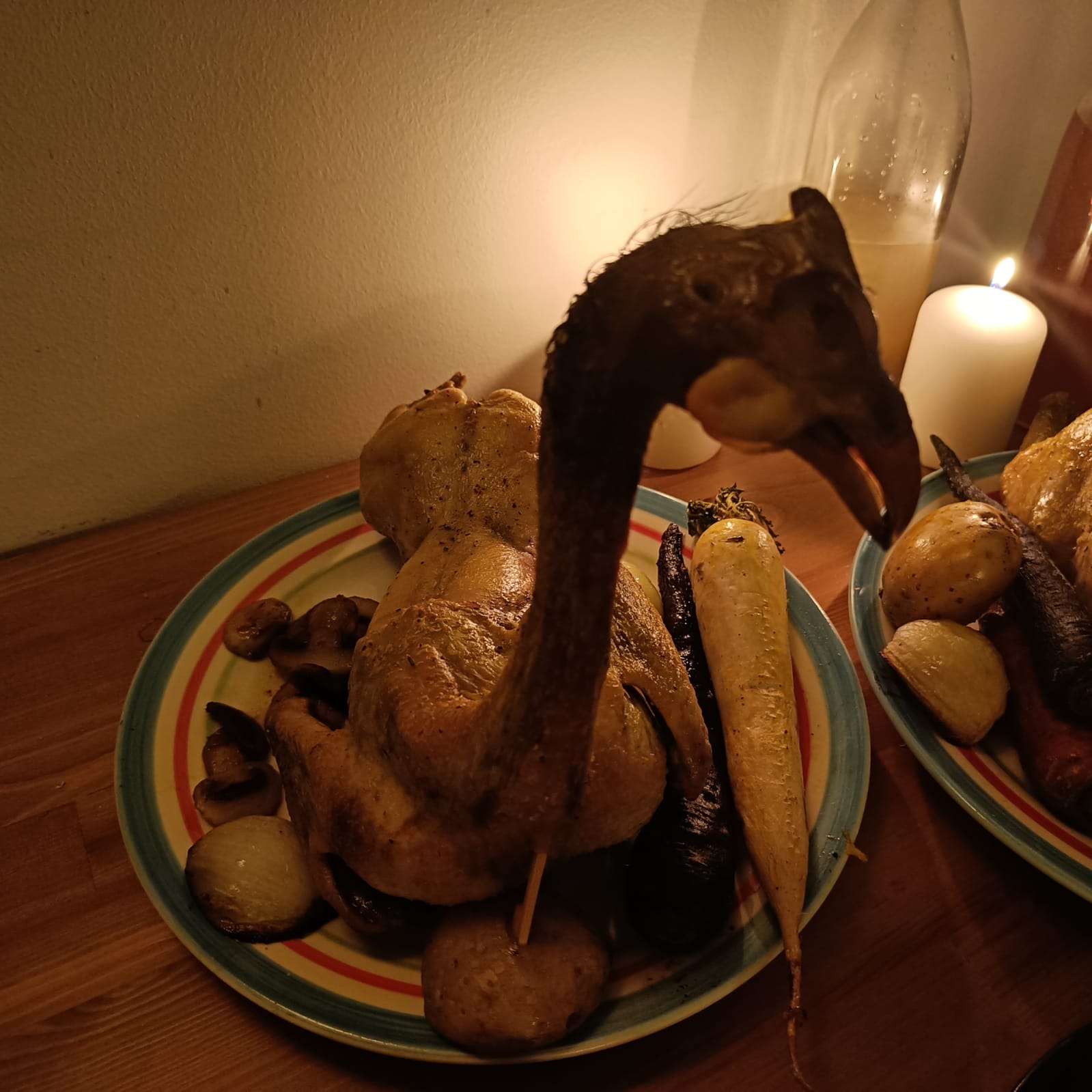
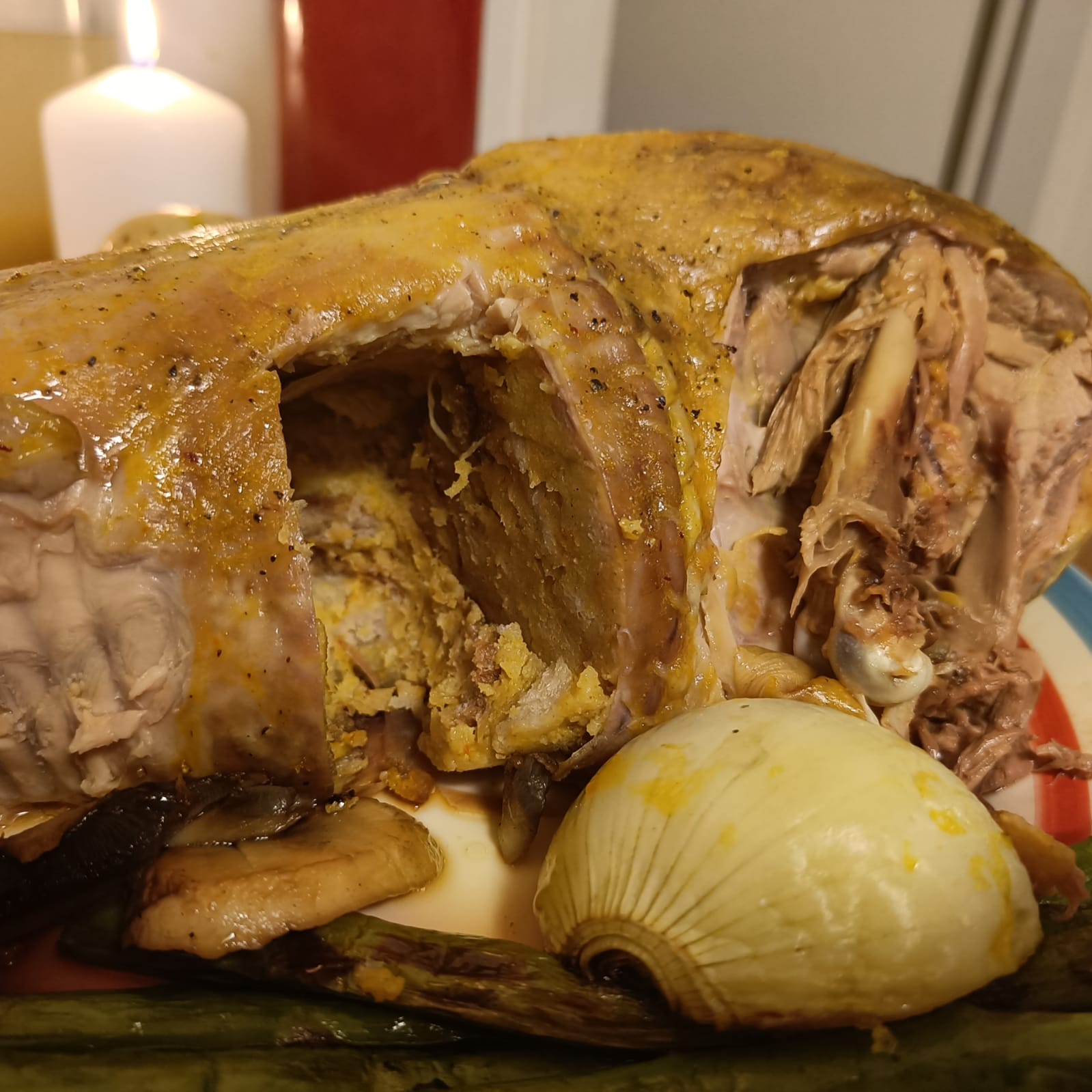
All in all, I would only recommend doing this if you plan on having a big party and don”Ēt mind spending the whole day in the kitchen, as this is very much a dish you should make for the 'wow-factor'. If you are going for taste, just prepare the animals separately.